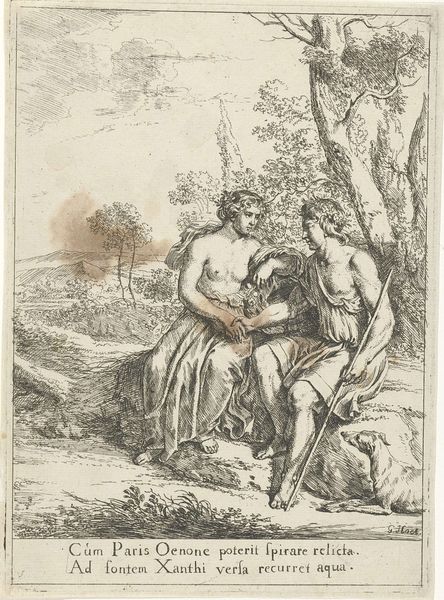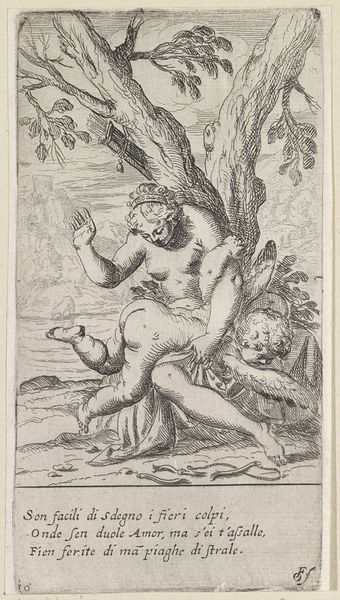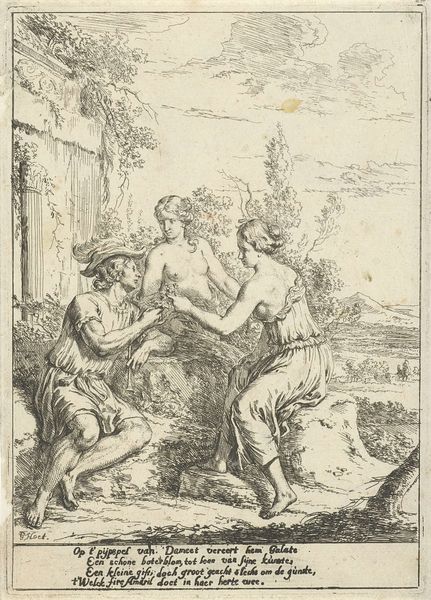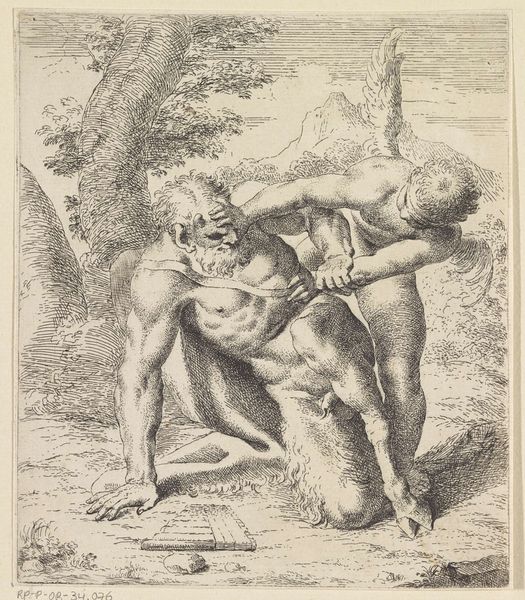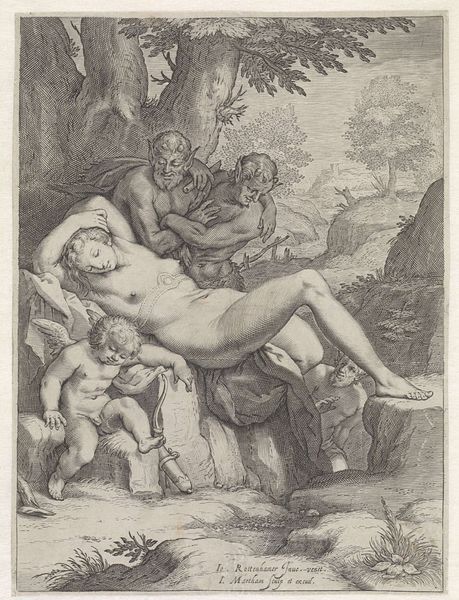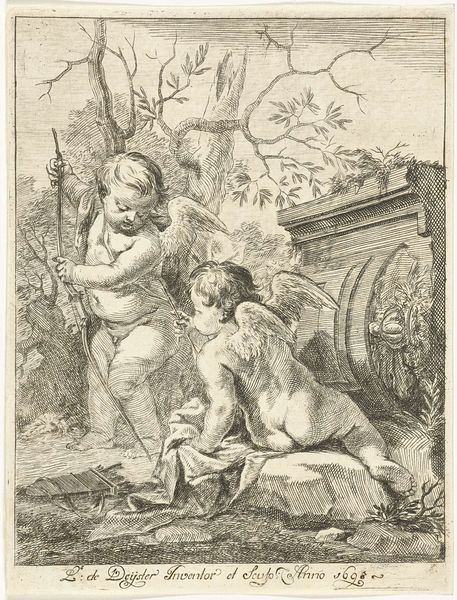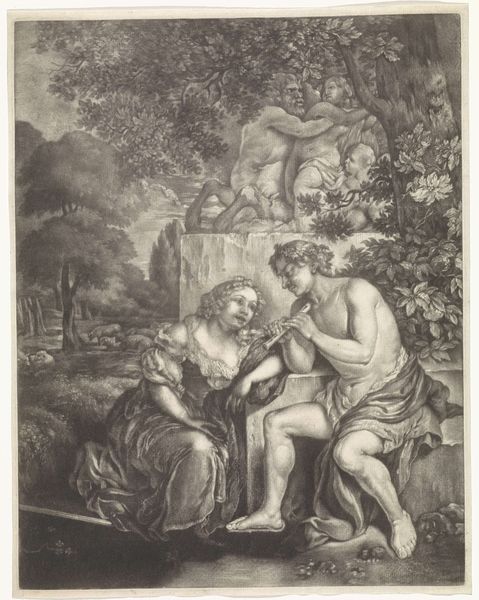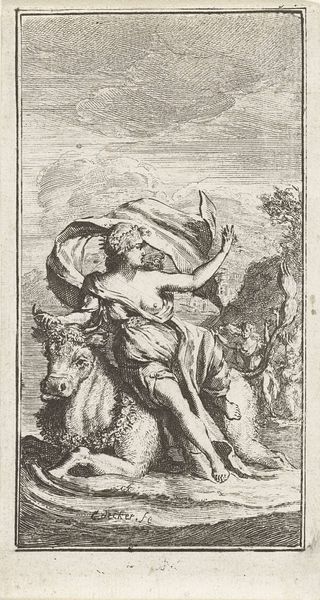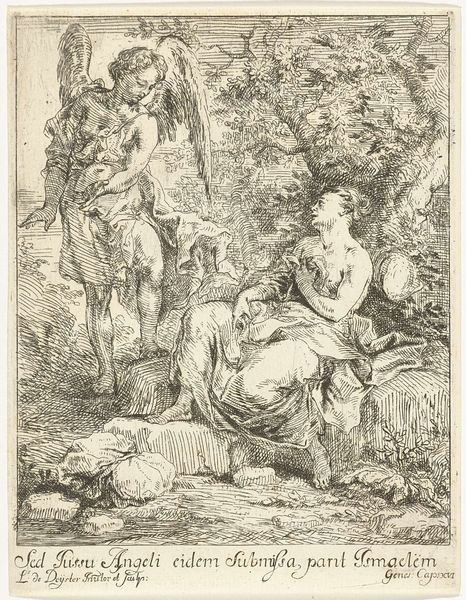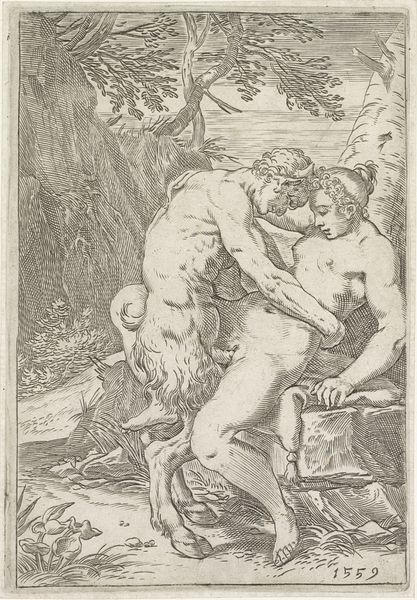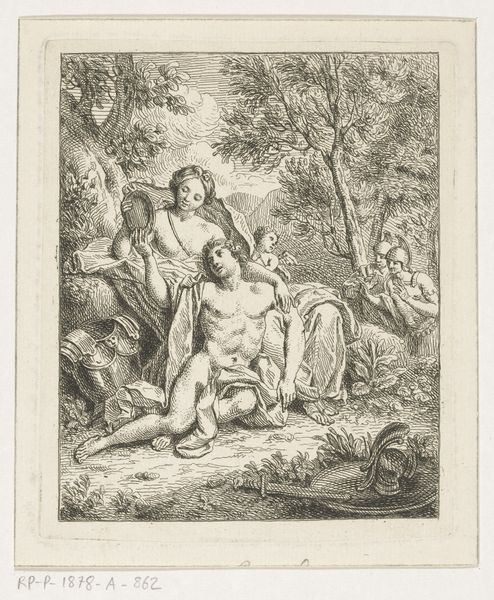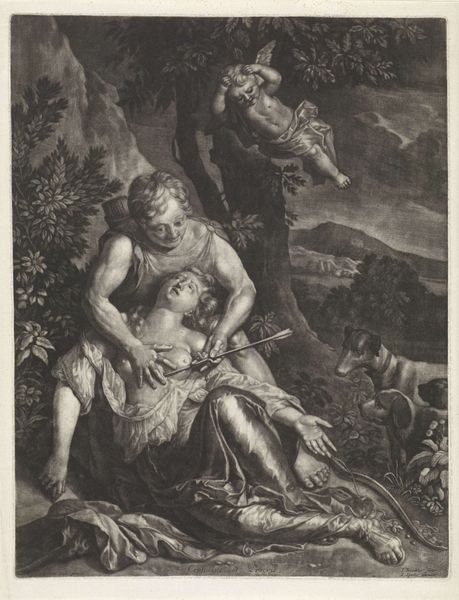
drawing, print, etching, pen, engraving
#
drawing
#
narrative-art
#
baroque
#
mechanical pen drawing
# print
#
pen illustration
#
pen sketch
#
etching
#
old engraving style
#
landscape
#
figuration
#
personal sketchbook
#
sketchwork
#
pen-ink sketch
#
pen work
#
sketchbook drawing
#
pen
#
storyboard and sketchbook work
#
engraving
Dimensions: height 202 mm, width 144 mm
Copyright: Rijks Museum: Open Domain
Gerard Hoet etched this image, "Aminta en Thestylis," sometime before 1733. We see a couple in embrace against the backdrop of classical ruins, a scene brimming with symbols of love and pastoral nostalgia. The ruin itself is a powerful motif. You'll see variations of it throughout art history, from the Renaissance to Romanticism. Ruins represent the passage of time, the ephemeral nature of human achievement. And yet, they also hint at a longing for a lost Golden Age, a yearning for simpler, more virtuous times, as seen in Virgil’s “Eclogues” and other pastoral works. The ruins here aren't just architectural; they are psychological, evoking a sense of melancholic reflection. Consider how this symbol echoes in later works, like Caspar David Friedrich’s landscapes. The emotional weight remains potent, engaging viewers on a subconscious level with the inexorable march of time and the enduring power of memory.
Comments
No comments
Be the first to comment and join the conversation on the ultimate creative platform.
